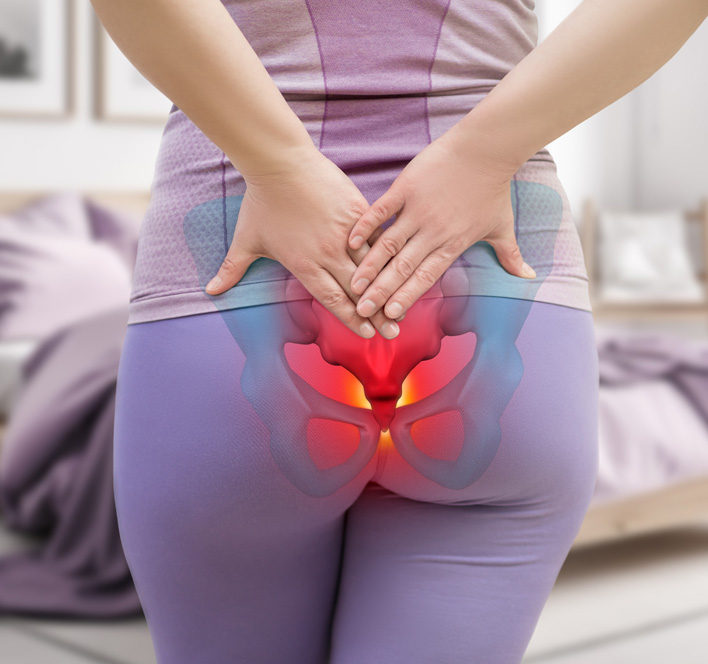Coccydynia, or chronic tailbone pain, can significantly impact your daily life, making even simple activities like sitting or standing a challenge. This condition often stems from an injury to the coccyx, the small triangular bone at the base of the spine. The pain can range from a dull ache to sharp, severe discomfort, which can persist for weeks, months, or even years. Managing coccydynia requires a multifaceted approach, combining lifestyle adjustments, medical interventions, and sometimes surgical options to alleviate symptoms and improve quality of life.
At NJ Spine & Orthopedic, we understand how debilitating coccydynia can be and are committed to providing effective, patient-centered care. Our experienced team offers a range of minimally invasive treatments designed to address the root cause of your pain, helping you regain comfort and mobility. If chronic tailbone pain is affecting your daily activities, we may be able to help. Read on to discover practical tips for managing coccydynia and explore how our dedicated specialists can support your journey to recovery.
Understanding the Causes of Coccydynia
Coccydynia can result from various factors, including trauma, prolonged sitting, and degenerative joint changes. Traumatic events like a fall or direct blow to the tailbone can lead to inflammation and chronic pain. Additionally, repetitive strain from activities such as cycling or prolonged sitting on hard surfaces can exacerbate the condition. Understanding these causes can help in developing effective management strategies.
Degenerative joint changes, such as those seen in osteoarthritis, can also affect the coccyx and lead to coccydynia. As we age, the joints and cartilage around the tailbone can wear down, causing pain and discomfort. In some cases, childbirth can contribute to coccydynia due to the pressure exerted on the coccyx during labor. It’s essential to identify the underlying cause of your tailbone pain to tailor an appropriate treatment plan.
Diagnosis typically involves a thorough medical history review and physical examination. Imaging tests like X-rays or MRI scans can help rule out other conditions and confirm the diagnosis of coccydynia. Once the cause is determined, a personalized treatment plan can be developed to address the specific factors contributing to your pain.
Effective Non-Surgical Treatments
Several non-surgical treatments can provide relief from coccydynia. Over-the-counter pain relievers such as ibuprofen or acetaminophen can help reduce inflammation and manage pain. Applying heat or cold packs to the affected area can also be beneficial. Heat therapy can relax tense muscles, while cold therapy can numb the area and reduce swelling.
Physical therapy is another crucial component of managing coccydynia. A physical therapist can teach you specific exercises to strengthen the muscles around the coccyx and improve flexibility. These exercises can help reduce pressure on the tailbone and alleviate pain. Additionally, posture training can be vital in managing coccydynia. Learning how to sit and stand correctly can minimize stress on the tailbone and prevent further aggravation of symptoms.
For more persistent pain, steroid injections may be recommended. These injections can reduce inflammation and provide longer-lasting relief. It’s essential to discuss the potential benefits and risks of steroid injections with your healthcare provider to determine if this treatment is suitable for you.
Surgical Options and When to Consider Them
In severe cases where non-surgical treatments fail to provide relief, surgical intervention may be necessary. Coccygectomy, the surgical removal of the coccyx, is typically considered a last resort due to the potential for complications and a lengthy recovery period. However, for some patients, this procedure can offer significant pain relief and improve their quality of life.
Before opting for surgery, it’s crucial to exhaust all conservative treatment options. Comprehensive diagnostic evaluations and consultations with spine specialists are essential to ensure surgery is the appropriate course of action. Minimally invasive techniques can sometimes be employed to reduce the risks associated with traditional surgery and promote faster recovery.
Post-surgical rehabilitation is a critical aspect of recovery. Physical therapy and pain management strategies are vital to ensuring a successful outcome and minimizing the risk of recurrence. Patients should follow their surgeon’s recommendations closely and engage in rehabilitation exercises to restore function and mobility.
Is NJ Spine & Orthopedic Right for Your Treatment?
At NJ Spine & Orthopedic, we offer a comprehensive approach to treating coccydynia, focusing on minimally invasive techniques to minimize pain and speed up recovery. Our dedicated team of board-certified neurologists, neurosurgeons, and orthopedic specialists work collaboratively to provide personalized care tailored to your specific needs. With advanced technology and a patient-centered approach, we strive to deliver the best possible outcomes for our patients.
If chronic tailbone pain is disrupting your life, our concierge team can assist in coordinating all aspects of your treatment, making your experience as smooth and stress-free as possible. Patients come from all over the nation to benefit from our expertise and state-of-the-art facilities. Contact NJ Spine & Orthopedic today at (866) 553-0612 or visit our contact form to schedule a consultation and take the first step toward relief.

